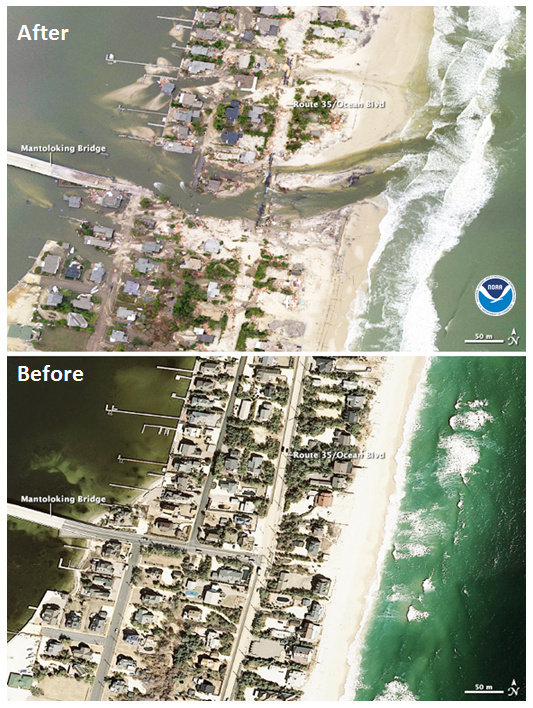
On this page you learn what types of flooding are typical in New Jersey and how do you protect yourself, your family and your home. You will also find out more about significant New Jersey floods. Finally, you'll find links to NWS offices that provide forecast and safety information for New Jersey as well as links to our partners who play a significant role in keeping you safe.
 |
Set Up: On September 16, the remnants of Hurricane Floyd intersected a stalled front and dumped more than 8 inches of rain in 12 of New Jersey's 21 counties. The hardest hit area was the Raritan Basin.
Location Impacted: Eight of the state's 21 counties, accounting for more than half the state's population of 8.4 million at the time, were declared disaster areas: Bergen, Essex, Mercer, Middlesex, Morris, Passaic, Somerset and Union.
Record flooding occurred at four river gages across the Raritan basin. Flood waters crested between eight and 14 feet above flood stage.
| Name of Gage/Location | Flood Stage | Crest |
| Blackwells Mills | 9.0 feet | 20.97 feet |
| Raritan | 10.0 feet | 18.87 feet |
| Manville | 14.0 feet | 25.70 feet |
| Bound Brook | 28.0 feet | 42.13 feet |
Boundbrook was one of the hardest hit towns; 10 feet of water was measured on Main Street. Power and phone services were interrupted and trucks were brought in to provide fresh water. Schools were closed for weeks. More than 650,000 customers were without electricity at some point. The National Guard was called out to help with recovery efforts. Stranded residents were plucked from houses by helicopters and boats. Approximately 10,000 people were evacuated across the state, 3,500 of those specifically from Boundbrook.
Number of Fatalities: Four
Dollar Damage: Total costs for the region in 1999 were estimated at $3 billion to $6 billion, hundreds of millions specifically for New Jersey.
Learn More:

|
|||||||